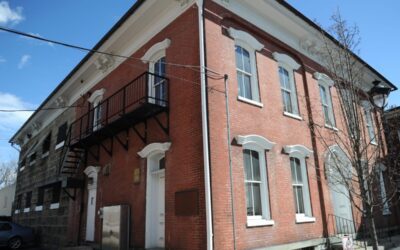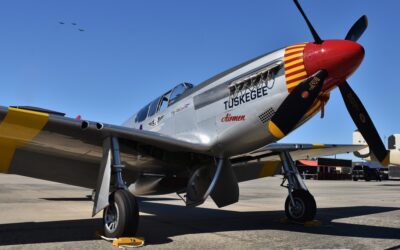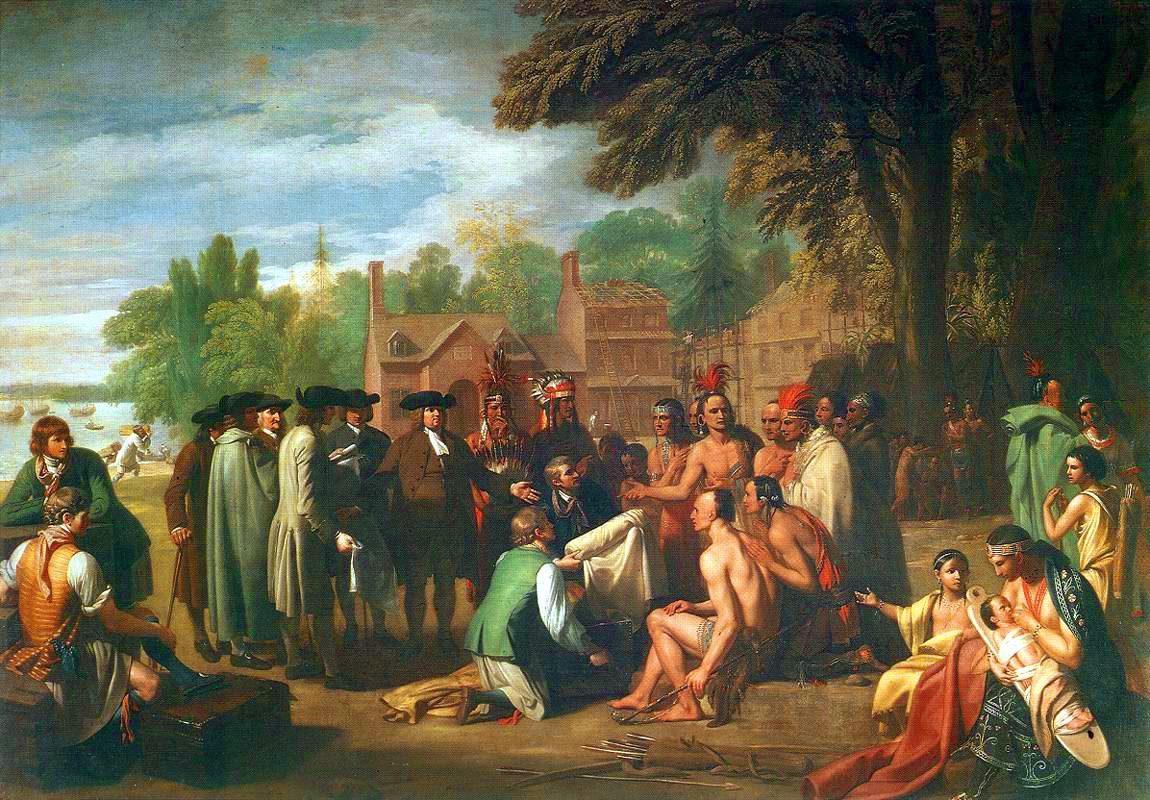
“Penn’s Treaty with the Indians” is a famous 1771 painting depicting an idealized version of William Penn entering into the 1682 Treaty of Shackamaxon (in present-day Philadelphia’s Fishtown) with the Lenape. While Penn and the Lenape committed to peace, it wasn’t long until Penn’s descendents cheated the Lenape and pushed them out of their territory. (Pennsylvania Academy of Fine Arts/public domain)
Long before Pennsylvania was Pennsylvania, Native American tribes thrived here—and many still do.
The area we call Pennsylvania had a long history before it was known by that name. Numerous indigenous tribes occupied different parts of the area, migrated through and away from it, engaged in conflict and alliances, and in some cases, vanished due to disease or warfare before European settlers ever met them.
Many tribes were decimated by colonization, either directly through violence and forced removal or indirectly through the spreading of disease. Others were displaced or weakened by wars with neighboring tribes, often driven by colonial pressures.
But many Native Americans still live in Pennsylvania, carrying on their traditions and maintaining their cultures, despite neither the federal nor the Pennsylvania government officially recognizing any tribe in the state.
Read on to learn about the multitude of Native Americans who once made, or still make, the lands of Pennsylvania their home.
1. The Osage
The Osage are now based in Oklahoma, but their ancestral territory includes parts of western Pennsylvania. The ancestors of the Osage migrated away from Pennsylvania, southwest down the Ohio River Valley, more than a thousand years before European colonists arrived in North America.
2. The Lenape (Delaware)
The Lenape are one of the most prominent indigenous inhabitants of eastern Pennsylvania, with ancestral lands centered in the Delaware River Valley. Europeans referred to the matrilineal tribe as the Delaware—a name the Lenape themselves didn’t use.
Their sophisticated society included consensus-based decision-making, a political structure that resonated with William Penn’s egalitarian ideals. However, European colonization pushed many Lenape people westward, and today, Lenape communities can be found in Oklahoma, Kansas, Missouri, New Jersey, Wisconsin, Ontario, and Pennsylvania.
Currently, the Lenape Nation of Pennsylvania is fighting for official recognition from the Pennsylvania state government. “Pennsylvania is the only state (commonwealth) in the Lenapehokink [Lenape ancestral homeland] that has never recognized its indigenous peoples,” the group writes on its website. In an active petition to the state government, they add: “It is inconceivable that our Commonwealth has yet to bestow the proper recognition and rights that the Lenape Nation of PA members are far overdue as the first people of this land.”
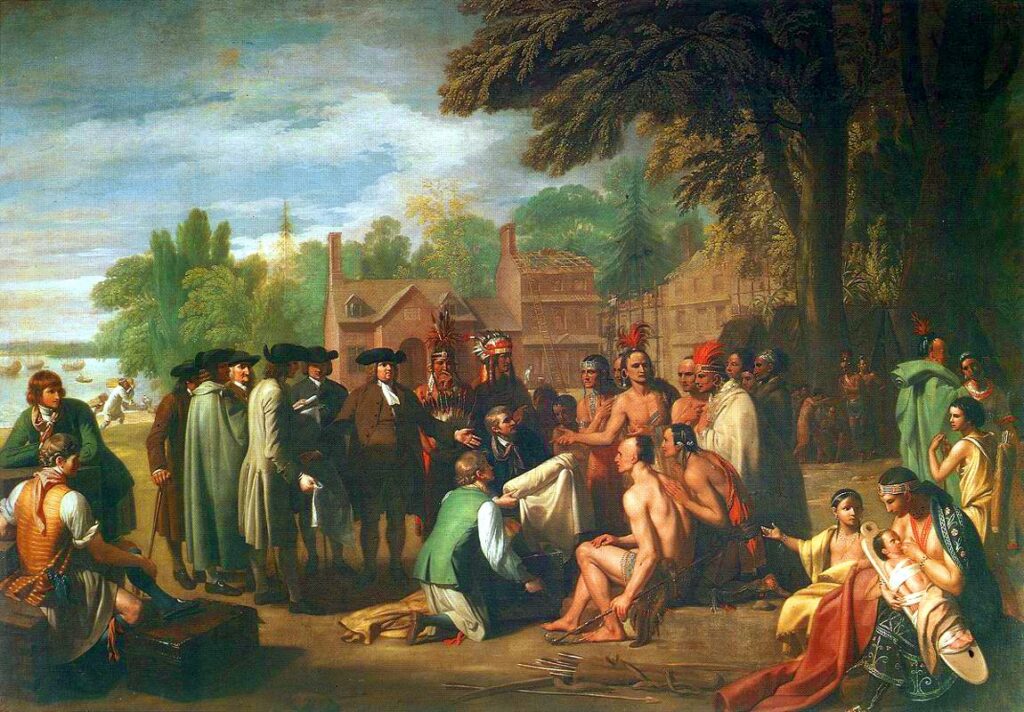
3. The Shawnee
Precontact, the Shawnee are believed to have been based in present-day southern Ohio, but as a semi-nomadic people, they began dispersing into surrounding areas—including the Susquehanna and Allegheny River Valleys in Pennsylvania—in the 1600s and 1700s, often at the invitation of the Haudenosaunee (Iroquois). However, expanding European colonization forced the Shawnee westward, and Ohio became the center of Shawnee resistance. Later, famous Shawnee leaders like Tecumseh launched resistance movements against European colonization, promoting inter-tribal unity in the face of U.S. expansion.
4. The Susquehannock
The Susquehannock is the name given to the tribe that was based in the Susquehanna River Valley when European colonists first arrived in what is now Pennsylvania. Indeed, the Susquehanna River gets its name from the tribe—but it’s unlikely “Susquehannock” is what they called themselves. Instead, we know the name because that’s what Captain John Smith (yes, that Captain John Smith) called the residents of an area along a river on his map of Virginia. His map even included a sketch of a Susquehannock man, whose impressive stature had Smith remarking that he was “the goodliest man we ever beheld.” Smith was probably told the name “Susquehannock” by interpreters from another tribe, who used a term likely meaning “people of the muddy river” to describe them.
The Susquehannock had little contact with Europeans before their population was decimated by disease and warfare with the Haudenosaunee (Iroquois).
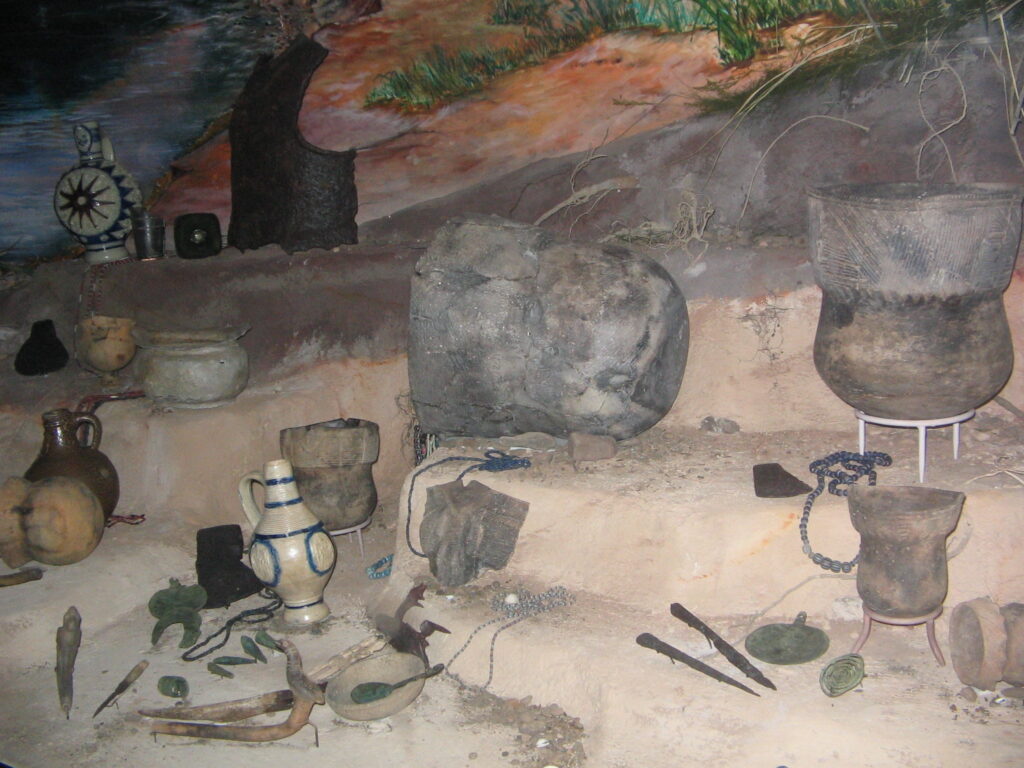
5. The Erie
Lake Erie takes its name from the region’s original inhabitants, a tribe known as the Erie. The name isn’t what they called themselves—it comes from the Wyandot (Huron) word “Eriehronon,” meaning “cat” people or “long-tailed” people. The French referred to them as the “Cat Nation,” though the “cat” may have been a raccoon, or possibly a mountain lion.
We don’t know much more about the Erie—they avoided almost all contact with European settlers, and by the mid-1650s, they had been destroyed in war with the Haudenosaunee (Iroquois). Survivors are believed to have been assimilated into the Seneca.
6. The Nanticoke
The Nanticoke were centered around the Chesapeake Bay in Maryland, but colonizing pressure eventually pushed the group into Pennsylvania. With assistance and permission from the Haudenosaunee (Iroquois), they first settled at the mouth of the Juniata River in central Pennsylvania and then soon moved into the Wyoming Valley in northeastern Pennsylvania.
The Nanticoke remained in Pennsylvania for several decades, joined by other displaced Chesapeake-area groups such as the Conoy, refugees who collectively became known as Nanticoke. By the time of the American Revolution, the Nanticoke had begun migrating north along the Susquehanna River, leaving Pennsylvania. Still, their legacy endures in Pennsylvania through place names like Nanticoke Creek and the town of Nanticoke in Luzerne County. “Nanticoke” is generally accepted to mean “tidewater people.”
7. The Monongahela culture
The group known as the Monongahela culture is so named because historians don’t know what they called themselves, nor what other tribes may have called them. They lived in the upper Ohio River Valley, including parts of present-day southwestern Pennsylvania, between roughly 1050 and 1635.
The culture disappeared in the early 1600s, possibly due to war, disease brought westward by Europeans, or migration and assimilation into other groups. This means that when Europeans eventually made it across the Appalachian Mountains to western Pennsylvania, many areas were largely uninhabited.
You can visit a site believed to have once been occupied by the Monongahela culture at Meadowcroft Rockshelter, one of the oldest known places of human habitation in North America, not far from Pittsburgh in Washington County.
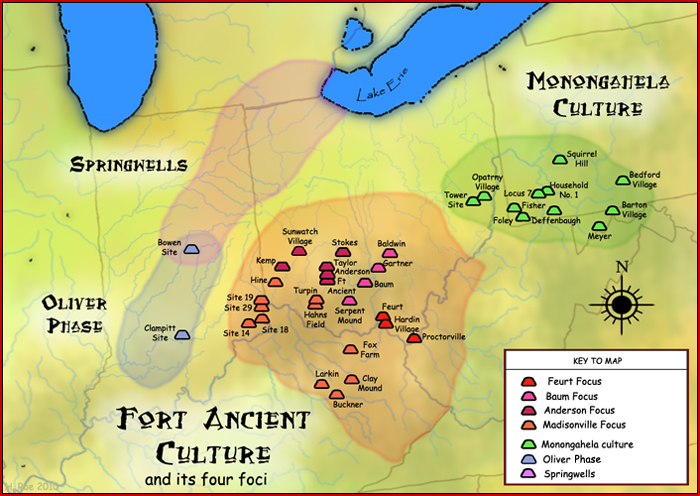
8. The Haudenosaunee Confederacy (Iroquois)
The Haudenosaunee Confederacy, known as the Iroquois Confederacy by Europeans, was one of the most powerful Indigenous alliances in colonial America. The original five nations—the Mohawk, Oneida, Onondaga, Cayuga, and Seneca—were joined by the Tuscarora in 1722, forming the Six Nations. Based in present-day New York State, the Haudenosaunee expanded their influence through both diplomacy and warfare, often absorbing other groups into their ranks.
In what is now Pennsylvania, their expansion contributed to the decline or dispersal of many tribes, including the Erie, Susquehannock, and Wyandot.
9. The Seneca
In more recent history, roughly 600 members of the Seneca Nation—the largest nation in the Haudenosaunee Confederacy—were forcibly displaced from their homes in southern New York and north-central Pennsylvania during the early 1960s for the building of the Kinzua Dam, a project designed to protect Pittsburgh and other communities downstream from flooding. The Seneca had been granted the land in a 1794 treaty, but the federal government violated that agreement.
Despite the significant loss, the Seneca Nation continues to preserve and revitalize its culture today.
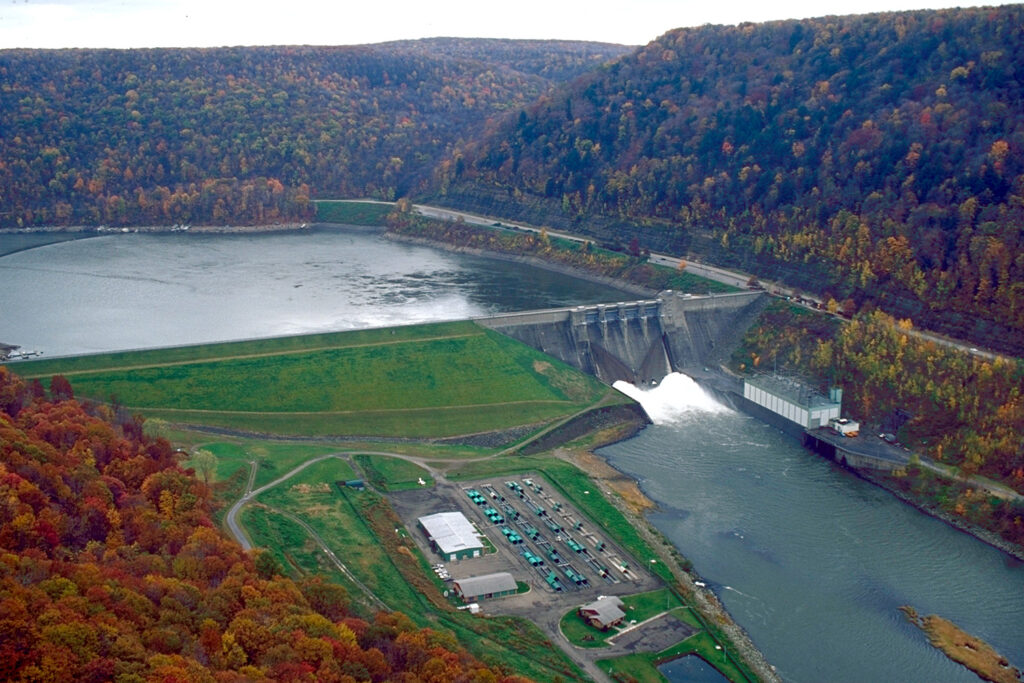
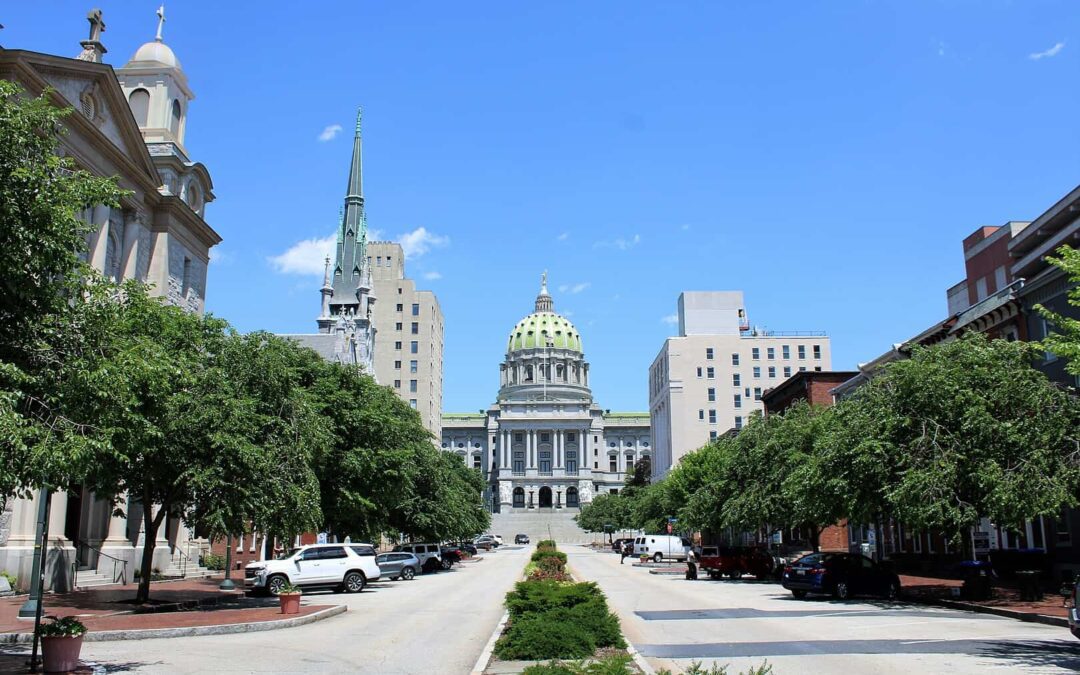
8 fascinating facts about Harrisburg, Pennsylvania’s capital city
These facts about Harrisburg prove the capital city is more than state politics and budget impasses. For a relatively small state capital (it’s the...
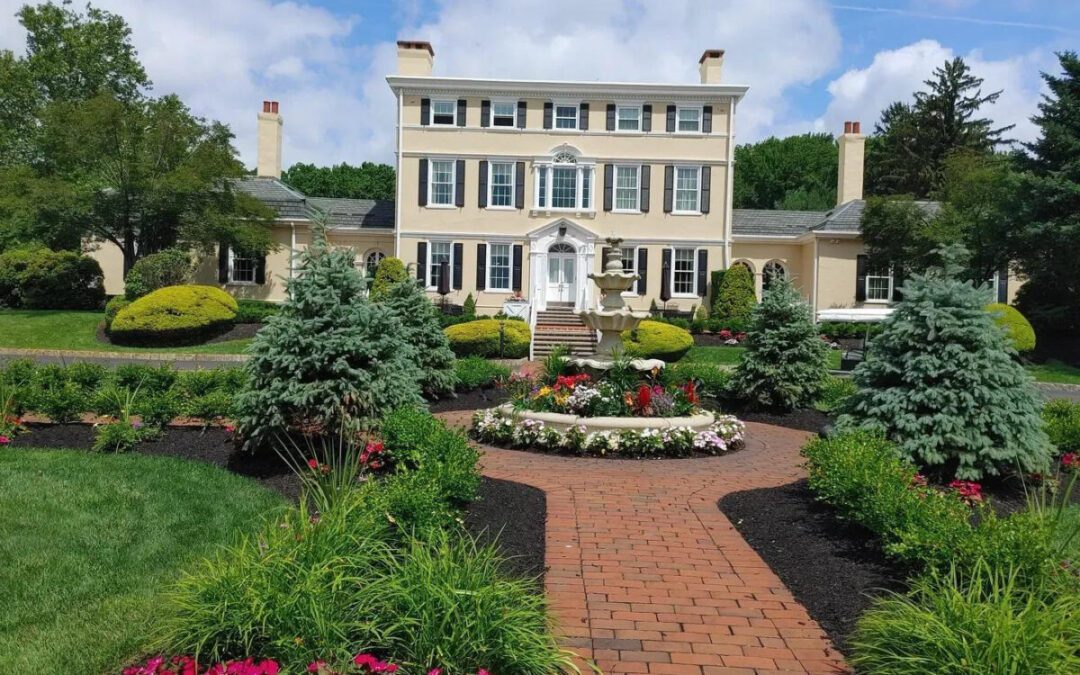
Bucks County has a rich ‘haunted’ history. Do you know these local ghost stories?
It's said that Bucks County is a place where you can live your best life—maybe your best afterlife, too. The rich history here includes the first...

Did you know Philadelphia has 11 sister cities?
As part of an effort to promote international understanding, Philadelphia has 11 sister cities in 10 countries. Here's a bit about each one. A...

Taylor Swift’s ‘The Life of a Showgirl’ is out now. Here’s what to know
Lights, camera, action. Taylor Swift's 12th studio album, “The Life of a Showgirl,” has arrived. Are you ready for it? Swift announced her latest...
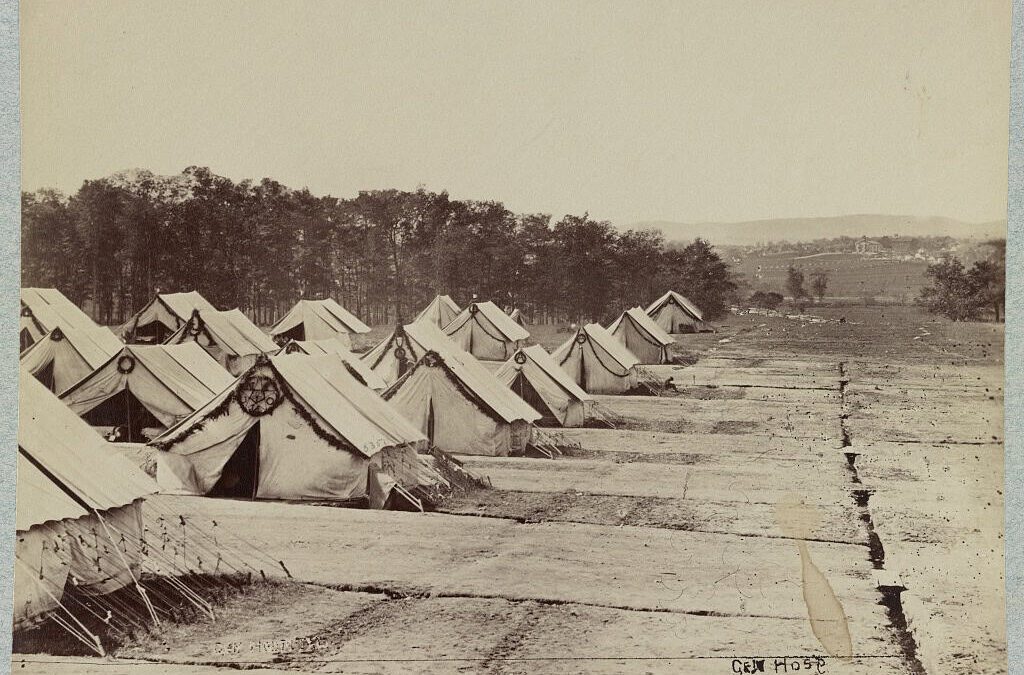
11 creepy facts about Pennsylvania that textbooks leave out
You may not have learned these unsettling facts about Pennsylvania in school. Textbooks, of course, celebrate Pennsylvania’s role in American...



